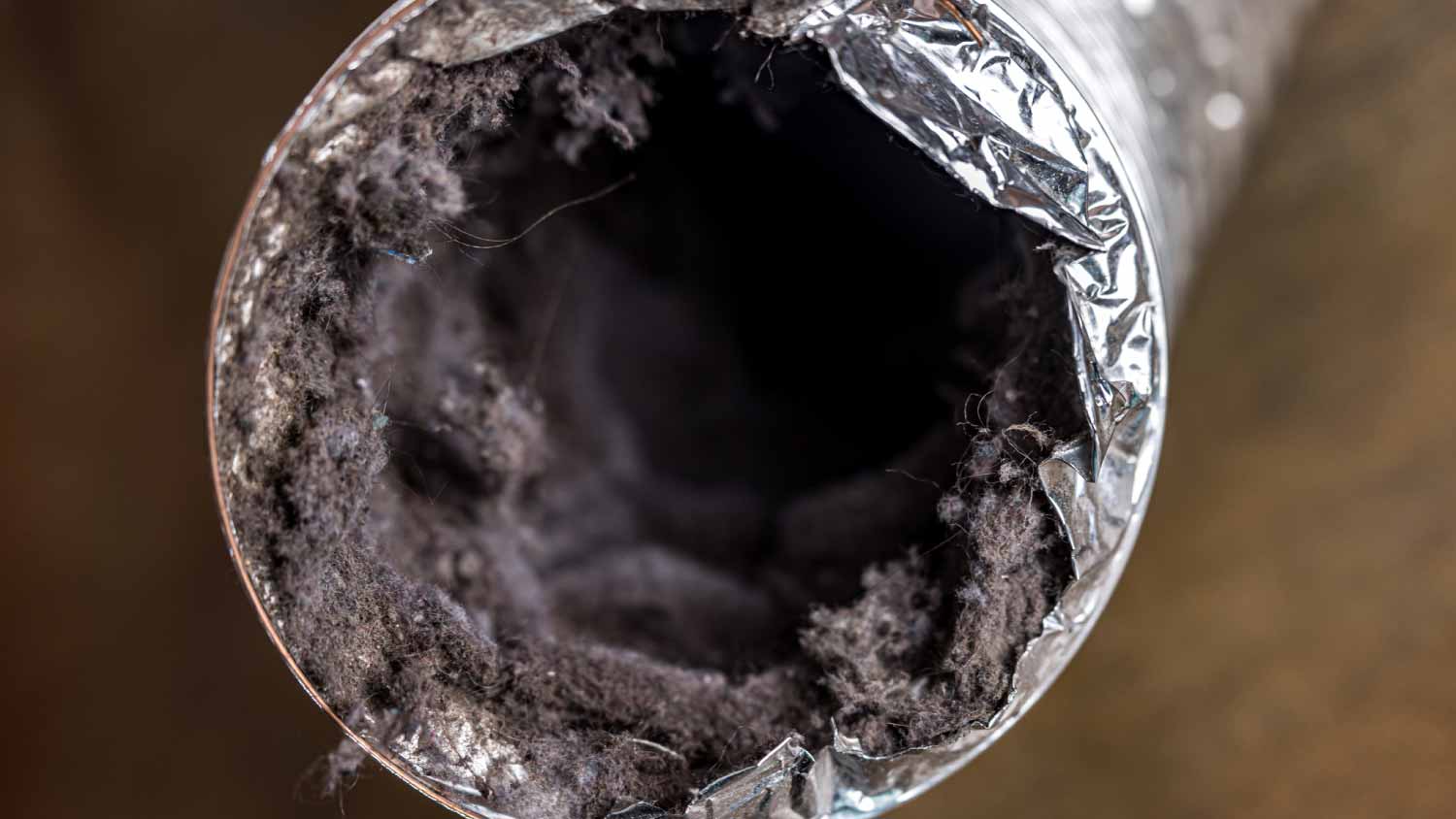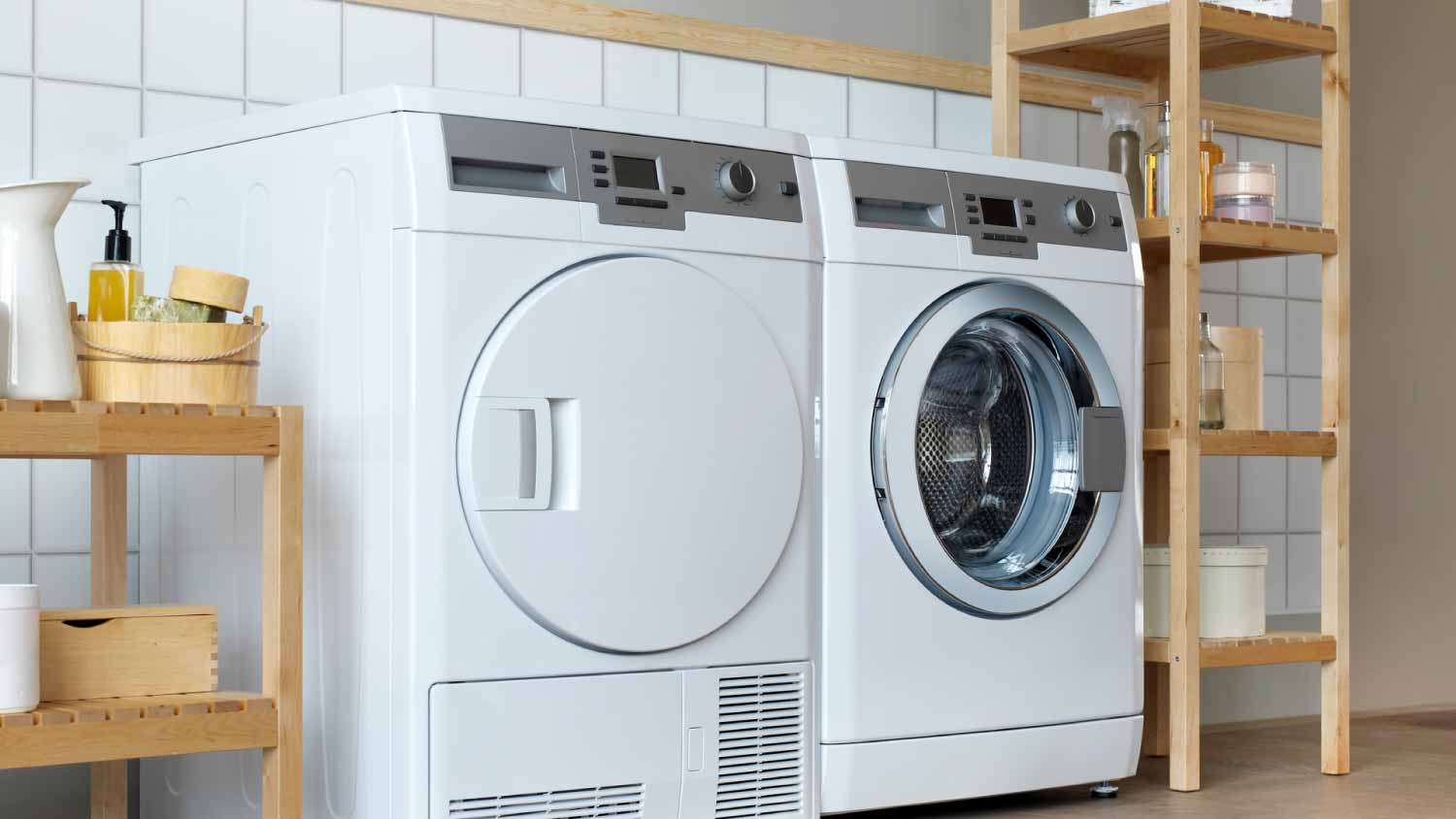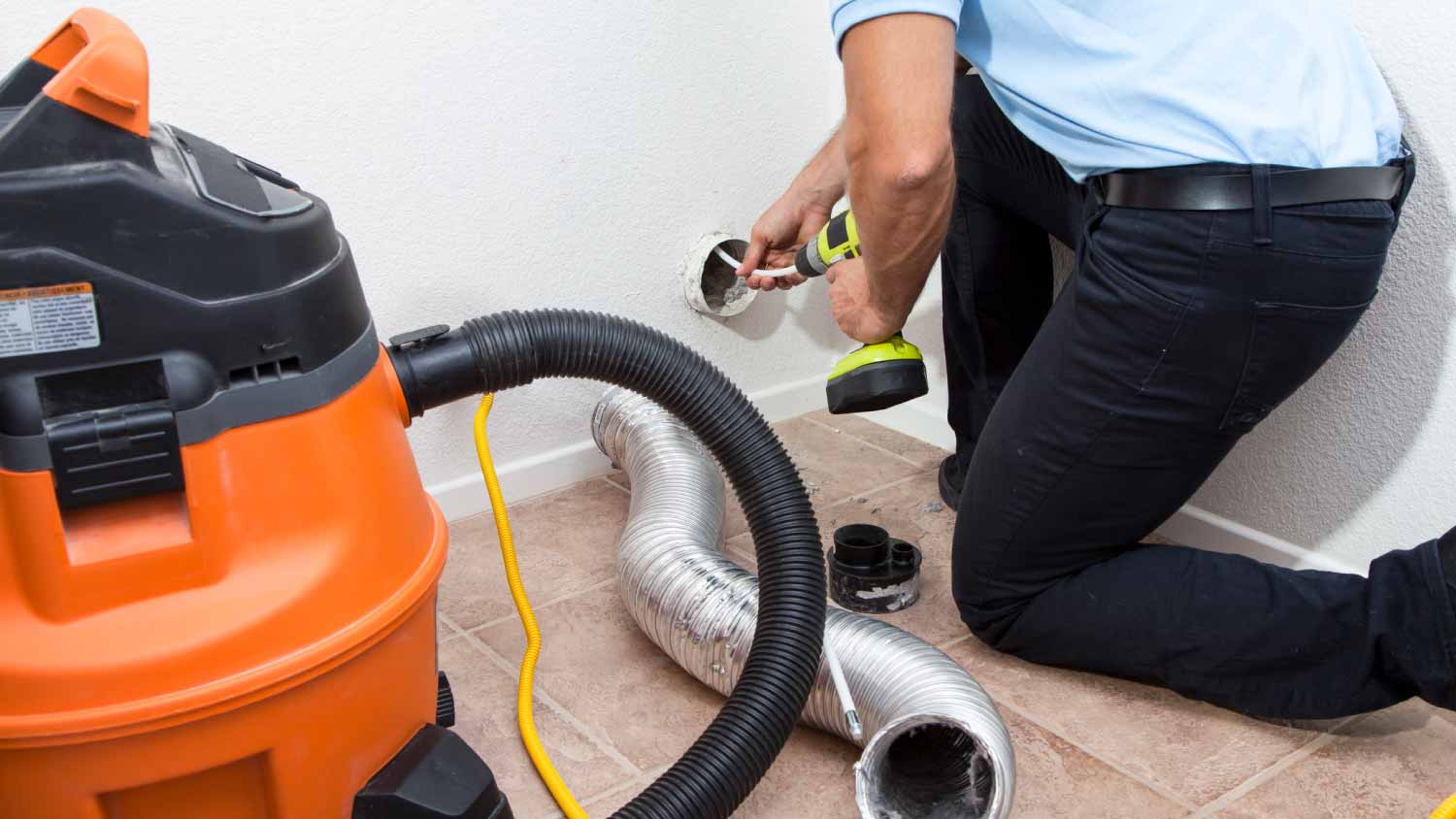
Range hoods come in various styles and help keep your kitchen clear of odors, smoke, and grease. Here’s how much it costs to install a range hood by type.
Water under the dryer? Here’s what to do


The most common reason your dryer leaks water is a blocked or damaged vent duct.
You can install a leak detector to alert yourself of future leaks.
On average, it costs $100 to $400 for a pro to repair your leaking dryer.
You might need a water restoration pro to treat the water damage.
A leaking dryer is more than just annoying. Left unattended, it reduces your dryer’s efficacy and causes water damage to the surroundings, especially if your washer and dryer are inside the living quarters instead of the basement. If you think you have a leaking dryer, it’s important to identify and address the root cause while taking care of any water damage it has caused.
Is there water under your dryer? If your washer seems fine, chances are it’s your dryer that’s leaking water. Unplug the dryer and check around the water supply hose and exhaust vents. Also, check the floor to ensure it’s not normal condensation or outside leaks if your washer and dryer are in the basement.
Common reasons for a leaking dryer include a faulty vent duct, a clogged lint filter, bad configurations, and a failing door seal. Understanding the root cause of the leak can help you troubleshoot the dryer and potentially fix the issue yourself.

A clogged or damaged exhaust duct is the most common reason for a leaking dryer. Look for visual damage, such as punctures and large holes. You can also try to squeeze or shake the vent duct to tell if debris and lint have built up. A clogged vent blocks the airflow and causes water to back up in the dryer, and a damaged vent will directly allow condensation to come out through the holes.
Always clean your lint filter after each cycle. A damaged or dirty lint filter can cause your dryer to overheat from lint blockage and potentially cause leaking. A dirty lint filter can also contribute to clogs in your dryer’s vent duct.
A faulty water supply hose can also lead to a leak. Check your dryer’s water supply line and see if you feel any moisture on the outside. If so, look for any obvious kinks, cracks, or punctures. If the connection points feel moist, you might have a loose water hose. Tighten it up and see if that fixes the problem.

If your dryer is not leveled, water will pull in one area and eventually leak. In this case, simply use a leveler to find the lower point and add some paddings to ensure your dryer is leveled.
If the seal on your dryer door is old or loose, it will let water out of the drum and cause a leak. Check to see if it is wet around your dryer door. If so, chances are you have a broken or faulty seal.
Condenser dryers collect removed moisture in a tank. If you have a condenser dryer at home, check if the tank is damaged or leaking. If the tank is empty, the culprit might be a faulty condensate pump and or damaged hoses.
Check your vent duct configuration. If it points at an indoor space, even if it’s your basement or garage, the hot air can still cause condensation problems. If you notice moisture around the exhaust, you might need to relocate the vent to exhaust out of your house.
If your dryer comes with a vent flap, check if it is stuck or damaged. The vent flap prevents outside elements from entering the vent duct. A defective vent flap can let rain, snow, ice, or even pests into the vent duct. In this case, it is not your dryer that is leaking, but outside water entering the vent duct and coming out of the appliance on the other side.

If you live somewhere with extremely cold climates, condensation can cumulate quickly inside the vent duct during the winter months and cause your dryer to bleed out water. This only happens
Consider installing a leak detector in your laundry room so you are notified the moment there is a leak. Clean the filter after each use and conduct regular inspections at least once a year. You should also avoid running long cycles back to back without decent intervals. If you live in colder areas, consider insulating your vent duct to prevent condensation or ice from forming.
If you have a leaking dryer, the first thing to do is identify the root cause. Some causes, such as unlevelled installation, can be easily addressed by yourself. Most dryer parts, such as the lint filter, vent hose, or door seal, are easy to replace without professional help.
If you’d rather leave repair to a professional, look for a handyman or appliance repair professional. On average, dryer repair costs between $100 and $400, with most leak repair projects costing about $200.
Depending on the severity of the leak, you may also need to hire a water restoration company. A dryer water leak causes Category 2 water damage, which means the water is slightly contaminated and the affected area should be disinfected and fully dried.
According to Angi customers, about 21% of washer and dryer problems involve a system that doesn’t work at all. Other commonly cited problems include being too noisy and not draining properly, at 10% each. Check out the most commonly requested projects:
From average costs to expert advice, get all the answers you need to get your job done.

Range hoods come in various styles and help keep your kitchen clear of odors, smoke, and grease. Here’s how much it costs to install a range hood by type.

Several factors impact dryer vent installation cost. Use this guide to learn what affects the cost, and how much you should budget for this project.

One of the most common fridge problems is a blown compressor motor. Use this guide to determine the cost of replacing the compressor and to estimate the total cost of your repair.

Discover why your pellet stove is not igniting and learn effective troubleshooting tips to fix the issue. Keep your home warm with our expert advice!

If your fridge is not cold but the freezer is, you can use these troubleshooting tips to find and address the issue, possibly without paying for repairs.

You have options for disposing of old appliances, like your refrigerator, freezer, washer or dryer. Use this guide to learn what to do with old appliances.